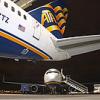RailPlanner
Intro
In the spirit of the former Virtubus, and the American Railroad RP, I've decided to start up a new roleplay. The idea behind this roleplay is to take a medium-sized North American city/metro area, and develop a commuter railroad for it (ala Virtubus, just with commuter rail).
Here's how the roleplay will work: Each round will start with an intro post on the city/metro area that will be that round's focus, with relevant area info included that may or may not be of use to everyone, depending on how they develop their system. following that, there will be 2 weeks to plan and submit your initial plan. After everyone's initial submission, there will be one week of judging, where there will be a polling system to grade factors of each design. The results from the poll will be computed into a formula, and at the end of that week, the results will be posted.
Formula TBA
Round 1 results
TBA

 Sign In
Sign In Create Account
Create Account






 Back to top
Back to top









